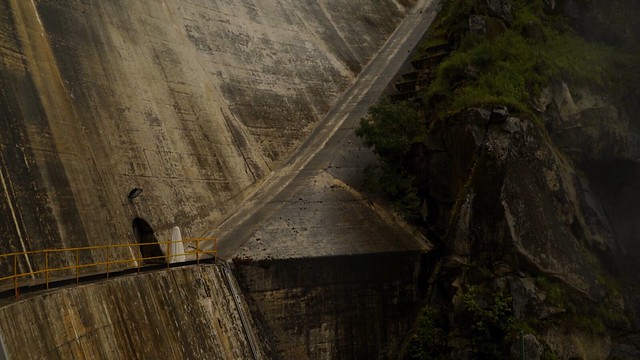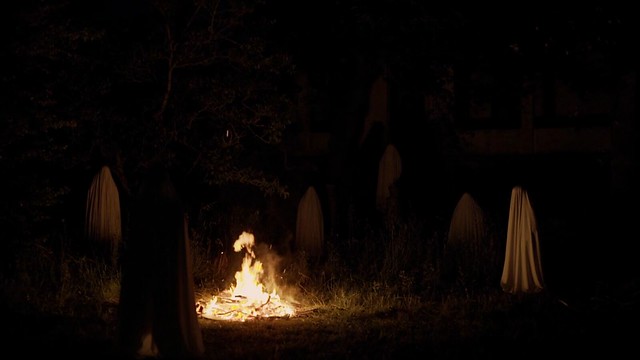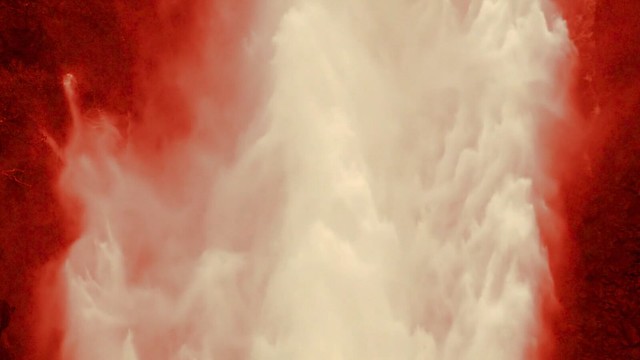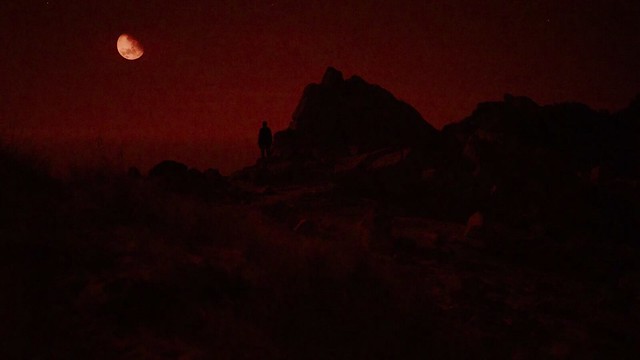











 In a coastal fishing village in Gallicia is experiencing another ocean related tragedy; Rubio, a fisherman who is known for retrieving dead bodies of shipwreck victims so the mourning villagers can have closures, became the victim himself of the tumultuous waves off the coast when his ship sank. His body might never be found. The local legend dictates that there is a monster living in the dark sea, awakened by the devil moon. Three ancient witches come in to town, to take its villagers who seem to be immobilized by grief on the spot where they stand by shrouding them over with white clothes making them a literal ghosts statues, while under red moon. And that's the gist of the story in Lúa Vermella.
In a coastal fishing village in Gallicia is experiencing another ocean related tragedy; Rubio, a fisherman who is known for retrieving dead bodies of shipwreck victims so the mourning villagers can have closures, became the victim himself of the tumultuous waves off the coast when his ship sank. His body might never be found. The local legend dictates that there is a monster living in the dark sea, awakened by the devil moon. Three ancient witches come in to town, to take its villagers who seem to be immobilized by grief on the spot where they stand by shrouding them over with white clothes making them a literal ghosts statues, while under red moon. And that's the gist of the story in Lúa Vermella.
Like Oliver Laxe's Fire Will Come, Patiño makes full use of Galicia's rustic natural beauty and its real inhabitants to tell a tale steeped in legends and its surroundings. His images are out of this world though. I've seen his short Fajr before, shot in Morrocan desert morphed with shadowy cloaked figures. Lúa vermella goes several steps further. I mean, those mindboggling transition shots alone makes it a worthwhile viewing.